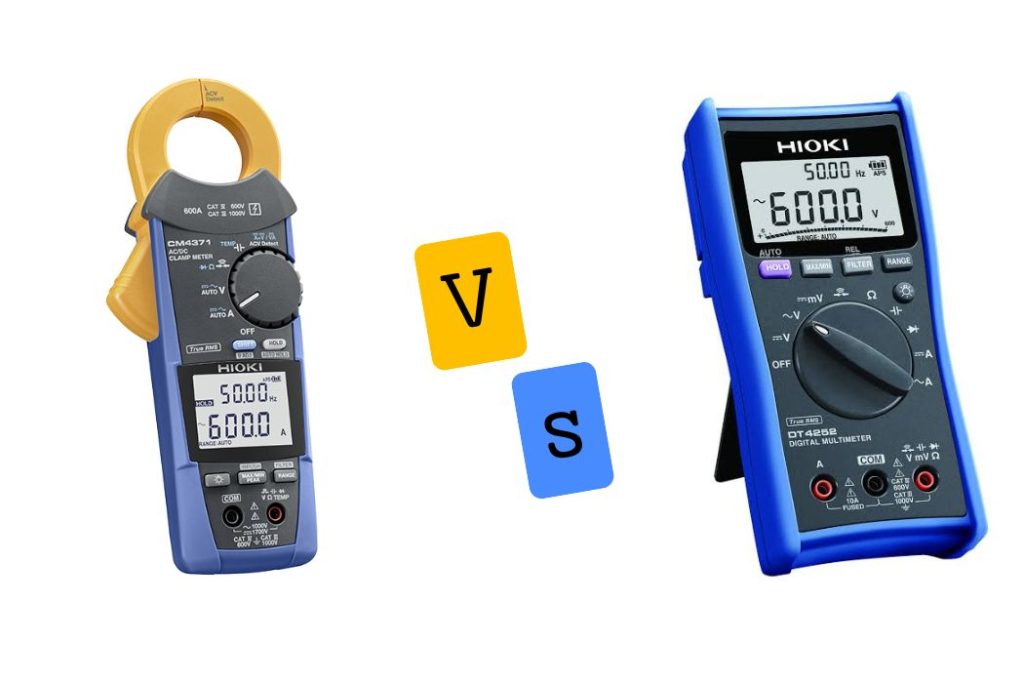When it comes to diagnosing electrical problems or measuring current, two common tools come into play: the clamp meter and the multimeter. However, these devices, despite serving similar purposes, are quite different in their design, use, and the kind of readings they offer. For anyone dealing with electrical work, whether you’re a professional electrician or a DIY enthusiast, understanding the differences between these tools can be crucial to getting the right results efficiently and safely.
In this guide, we’ll break down the key distinctions between clamp meters and multimeters, helping you choose the right tool for your specific needs. You’ll also learn when to use each tool, what advantages they offer, and how they can make your electrical testing simpler and more accurate.

What Is a Clamp Meter?
A clamp meter is a specialized type of multimeter that measures electrical current without the need to make direct contact with the electrical conductors. The main feature that distinguishes it is the clamp or jaw that can be opened around a wire. This allows you to measure the current flowing through a conductor, without needing to disconnect it.
Key Features:
- Non-contact current measurement: Ideal for measuring current without breaking the circuit.
- AC and DC measurements: Some models can measure both alternating current (AC) and direct current (DC).
- Easy to use: Simply clamp around the wire and read the current.
When to Use a Clamp Meter:
- High current measurements: Ideal for high-voltage systems where direct connection may be unsafe.
- Quick current readings: When you need to measure current in a live circuit without interrupting the flow.
- Preventing circuit damage: Since you don’t have to break the circuit, the risk of accidental short circuits is eliminated.
What Is a Multimeter?
A multimeter is a versatile instrument that can measure a variety of electrical parameters, including voltage, current, and resistance. Unlike a clamp meter, it usually requires direct contact with the circuit, typically via probes that you place across components.
Key Features:
- Multi-functional: Measures voltage, current, resistance, and sometimes capacitance and continuity.
- Requires circuit interruption: You need to disconnect or make contact with the circuit to measure values.
- Digital or Analog displays: Offers both digital and analog models for different precision levels.
When to Use a Multimeter:
- Comprehensive testing: Ideal for testing a wide range of electrical properties in circuits.
- Voltage and resistance testing: Perfect for identifying faults or testing resistors and circuits.
- Component-level measurements: When you need to measure the electrical properties of individual components or small parts of a circuit.
Clamp Meter vs. Multimeter: Key Differences
| Feature | Clamp Meter | Multimeter |
| Primary Use | Current measurement (AC/DC) | Voltage, current, and resistance measurements |
| Current Measurement | Non-contact, via clamp | Direct contact with the circuit |
| Ease of Use | Quick and easy for current measurements | Requires more steps for comprehensive testing |
| Versatility | Limited to current measurement | Can measure voltage, current, and resistance |
| Accuracy | Suitable for high current, but less precise for voltage and resistance | More precise for voltage, resistance, and low current |
| Safety | Safer for high current, no need to break the circuit | Requires more careful handling and direct contact |
Which One Do You Need?
The decision between a clamp meter and a multimeter depends entirely on what you’re trying to measure. Here’s a quick guide to help you decide:
- If you’re focused on measuring current in a live circuit and need a non-invasive tool, a clamp meter is your best bet. It’s quick, efficient, and safe, especially for high-current readings.
- If you’re working with a variety of components or need to measure voltage, resistance, and continuity, a multimeter is a more versatile tool. It’s the go-to choice for detailed electrical work and troubleshooting.
Expert Advice: When to Use Both
Many professionals keep both tools in their toolkit. Start with the clamp meter for easy and safe current measurements. If you need more detailed readings (voltage or resistance), follow up with the multimeter. Having both ensures you’re always ready for any electrical challenge, whether you’re diagnosing a faulty circuit or simply testing a component.
Actionable Takeaways:
- Assess Your Needs: If you’re primarily measuring current, opt for a clamp meter. If you’re dealing with components or a variety of electrical measurements, go for a multimeter.
- Ensure Safety: Clamp meters are generally safer for high-current applications as they don’t require direct contact with the circuit.
- Look for Versatility: Multimeters provide more flexibility but require additional setup.
Multimedia Integration
For better understanding, we recommend watching a short video tutorial on how to use both devices in different scenarios. This will allow you to see firsthand the differences between them and when each is most useful.
Conclusion
Choosing the right tool for electrical measurements doesn’t have to be complicated. Whether you choose a clamp meter or a multimeter depends on the type of measurements you need and the conditions of your work. If you’re primarily measuring current, a clamp meter offers a safer, quicker option. For more comprehensive electrical testing, a multimeter is your best bet.
Call-to-Action:
Need help choosing the right tool for your electrical work? Explore our in-depth guides and shop for high-quality testing tools on our site today!
Author Bio:
This article was written by MD NAYEM YUZZAMAN, an experienced electrical technician with over 10 years of hands-on expertise in diagnostics and troubleshooting electrical systems. With a passion for sharing knowledge, Nayemuzzaman provides practical, easy-to-understand advice for professionals and DIYers alike.
Last Updated: September 2025
Privacy Notice: This content is sponsored by Hioki. We ensure transparency and only recommend products we believe in.
